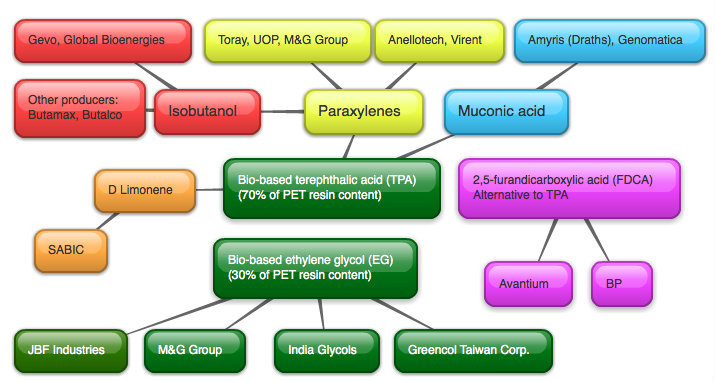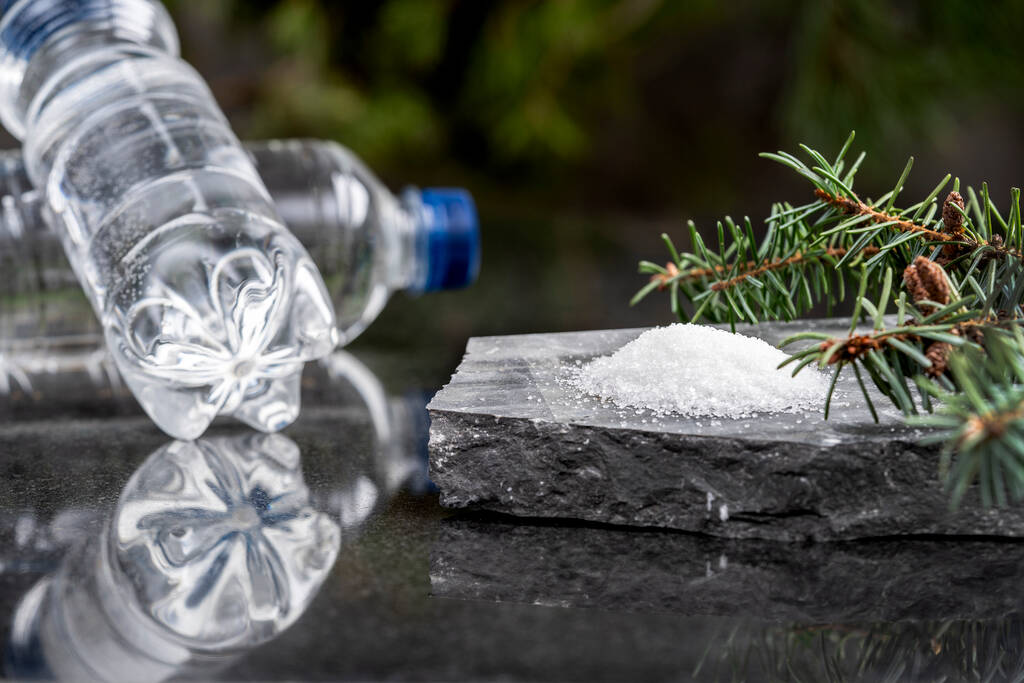Happy October! It feels like it has been awhile since I last posted. School is creating chaos on my grand blogging plans but the blogger will persist.
Finally, Coca-Cola announced it’s long-awaited bio-based monoethylene glycol (bio-MEG) plans for its polyethylene terephthalate (PET) PlantBottle as the plastic industry has always been curious on how Coca-Cola will sustainably source its bio-MEG supply given that there are not a lot of producers out there for this material (only one source according to Coca-Cola).
For those who are not familiar with PET bottles, the resin is made from 30% MEG and 70% PTA (purified terephthalic acid) by weight. Coca-Cola’s PlantBottle packaging is currently made with sugar-based MEG and petroleum-based PTA.
Coca-Cola announced last week that it has partnered with India-based JBF Industries Ltd. to further expand its bio-MEG supply. JBF Industries will build what they claimed as the world’s largest facility to produce bio-based glycol to be located in Araraquara, Sao Paulo, Brazil, with a capacity of 500,000 tonnes/year. The bio-based MEG will use sugarcane and bagasse for feedstock. The blog wonders how much sugar the facility will consume…
 |
| Xiemar Zarazúa, President, Brazil Business Unit, and Ronald J. Lewis, Vice President, Procurement & Chief Procurement Officer at The Coca-Cola Company. |
Construction of the new facility is expected to start at the end of this year and is expected to start-up either the end of 2014 or early 2015.
According to Coca-Cola, using the bio-based MEG for its PlantBottle will remove the equivalent of 690,000 tonnes of carbon dioxide or the use of more than 1.5m barrels/year of oil. The company said it has already sold more than 10bn PlantBottle packages around the world.
The blog also found out from Plastics Engineering blog that Coca-Cola’s PlantBottle (at least here in the US I guess) was made by Western Container Corp. in Fife, Washington, an injection stretch blow molding company belonging to Coca Cola bottlers.
The blogger recalled that Coca-Cola confirmed last year in December (when it announced partnerships for its future bio-based PTA supply) that the company has been paying a premium for the bio-MEG component.
“As we improve our supply chain, we will continue to reduce that premium that we pay today and believe it will be at equivalent prices, or potentially better, as we go forth and develop our strategy on PlantBottle.” – Coca-Cola’s VP of Commercial Product Supply Rick Frazier
Coca-Cola’s goal is to commercialize a 100% bio-based materials for all of its plastic bottles by 2020. For those who wants background about bio-PET developments, here is a story I wrote last year with interviews from both Coca-Cola and PepsiCo.
With regards to bio-MEG, Coca-Cola reportedly has been sourcing its supply from India Glycols. Plastics Engineering Blog also noted that India Glycols doubled its combined bio-ethylene oxide (an intermediate for producing bio-MEG) and bio-MEG capacity from 220m lb/year to 440m lb/year (220,000 short tons) in 2008 ahead of Coca-Cola’s PlantBottle launch in 2009.
According to bioplastic industry expert Jim Lunt (when I interviewed him last year), India Glycols convert sugarcane ethanol to EG and has the capacity to manufacture 150,000 tonnes/year of bio-MEG from molasses and bio-ethanol.
By the way, Lunt also noted early last year that a 20,000 short tons/year of bio-based EG is equivalent to 33,000 short tons/year of PET. You do the math on how much PlantBottle will be produced out of JBF Industries’ new bio-based MEG facility…
Plastics Engineering blog noted that Coca-Cola’s bio-MEG coming from India Glycols is converted into bio-PET (combined with petroleum-based PTA of course) in Indonesia via PET bottle producer Indorama Ventures.
The bio-based MEG sector is actually busier now, with Toyota Tsusho’s joint venture company Greencol Taiwan supposedly already producing its 100,000 tonne/year bio-MEG at its plant in Kaohsiung, Taiwan; and Italian PET producer M&G Group looking to enter the bio-PET market by producing its own bio-based PTA and bio-EG.
When I attended Jm Lunt’s bioplastic conference early this year in Florida, M&G said it has created a new biochemicals business unit that will handle developments and future commercialization of biobased ethanol and bio-polyester feedstocks EG, PX and bio-based purified terephthalic acid (PTA).
M&G has already started in March this year a 3 kg/hr bio-EG pilot plant in Rivalta, Italy, using lignocellulosic ethanol. The company is currently building a 44,000 tonnes/year bioethanol plant in Crescentino, Italy, which is expected to start later this year. The bio-ethanol plant is expected to be a future supply source for its bio-EG.
M&G is also looking to build a cellulosic ethanol plant either in Brazil or Mexico as well as a chemicals production unit integrated to the plant that will initially produce bio-based glycols and at a later stage, bio-paraxylene (the feedstock for producing bio-PTA) and bio-PTA.
The biorefinery is expected to have 350,000 tonnes/year cellulosic ethanol, and 100,000-150,000 tonnes/year bio-glycols capacity. The biorefinery could be up and running in 2015, according to M&G early this year. 100% of the bio-EG output will be taken to M&G on a long term basis for use at M&G PET plants in the Americas.
An interesting news tidbit from M&G recently is that the company just purchased a 1m tonnes/year PET and 1.2m tonnes/year PTA plants at Corpus Christi, Texas.




